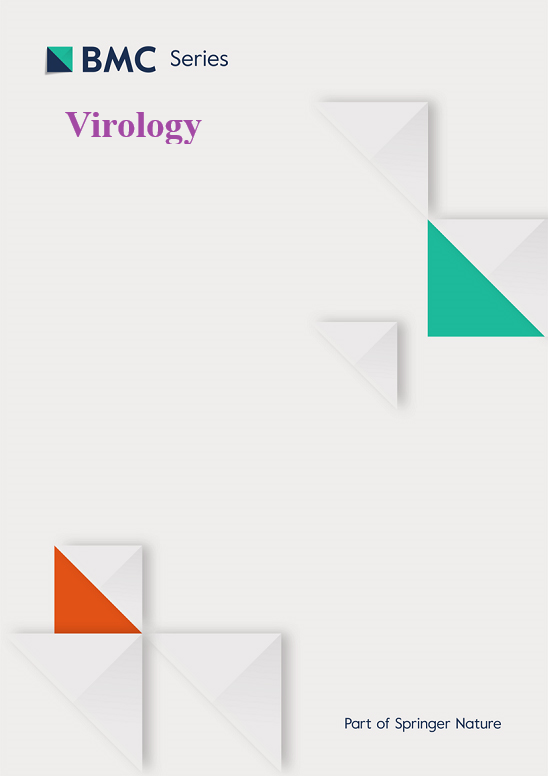昆虫的分子抗病毒反应、免疫启动和遗传
IF 2.8
3区 医学
Q3 VIROLOGY
引用次数: 0
摘要
昆虫传播给植物的病毒性疾病造成严重的农业损害,虫媒病毒传播给人类造成严重的疾病暴发。病毒和昆虫防御系统之间的相互作用是复杂的,并已演变成相互作用的分子相互作用。病毒描述了复杂的分子机制,以确保入侵、复制和退出昆虫宿主细胞,入侵其他细胞。另一方面,昆虫细胞利用分子策略来识别、阻止复制并消除入侵者。反过来,病毒会采取规避策略。主要的抗病毒防御机制RNA干扰(RNAi)识别并降解病毒RNA,从而抑制病毒复制。这些与其他典型的免疫途径(Toll、IMD、JAK/STAT和Akt-ERK)结合在一起,主要用于对抗细菌、真菌和原生动物,以及消除受感染细胞(如凋亡和吞噬)的机制,构成了一个多因子系统。暴露于减毒或亚致死病毒感染的昆虫可以对同一病原体(启动)做出更快和增强的免疫反应,这就像脊椎动物的免疫记忆一样。已经提出了几种解释启动的机制,包括内复制、DNA甲基化和组蛋白乙酰化引起的表观遗传基因修饰。启动可以被后代遗传(跨代免疫启动,TGIP)。然而,TGIP的确切分子机制仍有待阐明。本文综述了昆虫对抗病毒感染的分子机制,讨论了该领域的最新研究进展和有待解决的问题。本文章由计算机程序翻译,如有差异,请以英文原文为准。
Molecular antiviral responses, immune priming and inheritance in insects
Viral diseases transmitted by insects to plants cause severe agricultural damage and arboviruses transmitted to humans cause severe disease outbreaks. The interaction between viruses and the insect defences is complex and has evolved into acting-counteracting molecular interplays. Viruses depict complex molecular mechanisms to ensure invasion, replication and exit the insect host cell, to invade other cells. On the other hand, insect cells use molecular strategies to recognize, halt replication and eliminate the invaders. In turn, virus counteract with evasive strategies. The main antiviral defence mechanism RNA interference (RNAi) recognizes and degrades viral RNA, thereby inhibiting viral replication. These in conjunction with other canonical immune pathways, Toll, IMD, JAK/STAT and Akt-ERK developed mainly to combat bacteria, fungi and protozoa, along with mechanisms to eliminate infected cells like apoptosis and phagocytosis comprise a multifactorial system. Insects exposed to an attenuated or sublethal viral infection could respond with faster and enhanced immune responses to the same pathogen (priming), which is like immunological memory in vertebrates. Several mechanisms have been proposed to explain priming, including endoreplication, epigenetic gene modifications by DNA methylation and histone acetylation. Priming could be inherited by the offspring (transgenerational immune priming, TGIP). However, the precise molecular mechanisms underlying TGIP remain to be elucidated. This article reviews the molecular mechanisms employed by insects to combat viral infections, discusses the current information and the outstanding research questions in the area.
求助全文
通过发布文献求助,成功后即可免费获取论文全文。
去求助
来源期刊

Virology
医学-病毒学
CiteScore
6.00
自引率
0.00%
发文量
157
审稿时长
50 days
期刊介绍:
Launched in 1955, Virology is a broad and inclusive journal that welcomes submissions on all aspects of virology including plant, animal, microbial and human viruses. The journal publishes basic research as well as pre-clinical and clinical studies of vaccines, anti-viral drugs and their development, anti-viral therapies, and computational studies of virus infections. Any submission that is of broad interest to the community of virologists/vaccinologists and reporting scientifically accurate and valuable research will be considered for publication, including negative findings and multidisciplinary work.Virology is open to reviews, research manuscripts, short communication, registered reports as well as follow-up manuscripts.
 求助内容:
求助内容: 应助结果提醒方式:
应助结果提醒方式:


